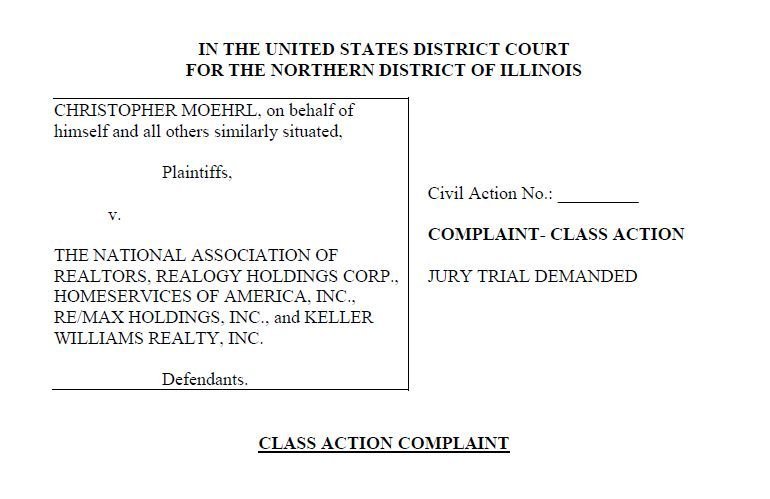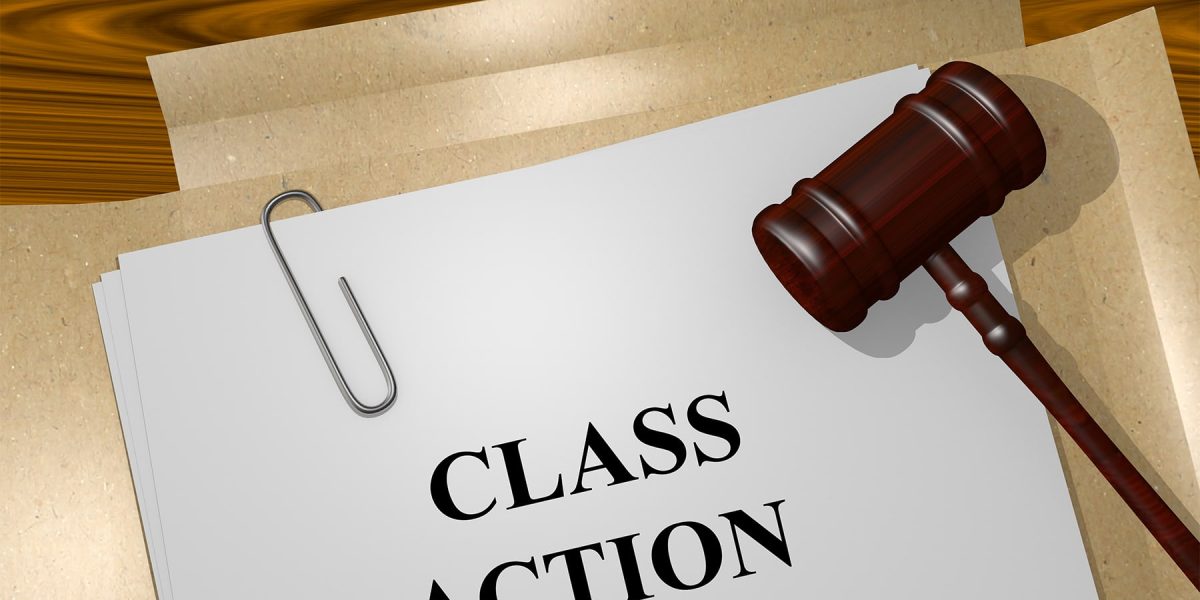Insights into the Future FinTech Class Action Lawsuit: Remain Informed
Wiki Article
Checking Out Course Activity Suits: What You Required to Know
Course action suits have actually ended up being progressively prevalent in today's legal landscape, with individuals signing up with pressures to seek redress against companies and companies. In this discussion, we will check out the ins and outs of class activity claims, dropping light on their meaning, the requirements for filing, and the potential advantages and disadvantages entailed.The Definition of Class Action Suits
A class action claim is a lawful action filed by a team of individuals who have similar claims against an accused. Course activity claims are usually brought when the number of potential complainants is also huge for individual suits to be sensible.Among the key aspects of a course action claim is that the lead plaintiff, additionally known as the class representative, represents the interests of all the course members. The court designates the lead plaintiff based on their capability to rather and sufficiently represent the course. The lead plaintiff works closely with the course activity attorney to construct a strong case and seek settlement or various other solutions on behalf of the whole course.
In order for a class action legal action to proceed, the court has to accredit the course. This indicates that the court figures out that the legal action fulfills particular demands, such as numerosity (a big adequate number of class participants), commonality (common concerns of regulation or fact), typicality (the cases of the lead plaintiff are normal of the class), and competence of representation (the lead plaintiff and class advice are capable of representing the course's rate of interests) As soon as the class is licensed, the lawsuit can move on, and any judgment or settlement reached will relate to all class participants unless they choose to opt-out.
Class activity legal actions offer a vital objective in supplying accessibility to justice for people who may not have the sources to seek their insurance claims individually. They additionally advertise efficiency in the lawful system by consolidating comparable cases right into a single activity, minimizing the concern on both the court and the events included.
Demands for Submitting a Course Activity Legal Action

Another requirement is that the course needs to be completely numerous. The precise variety of class participants called for might differ relying on the territory and the nature of the instance. It is typically expected that the class needs to be huge sufficient that joining all the private plaintiffs into a single legal action is much more efficient than having numerous separate legal actions.
Furthermore, it is important that the course representative, who is the private or entity bringing the suit in behalf of the class, has common claims and defenses to those of the course participants. The representative must also be able to effectively and rather stand for the interests of the entire class.

Benefits and Downsides of Class Activity Claims
Class action legal actions provide both advantages and disadvantages for complainants and defendants entailed in the lawful procedure. On the one hand, among the significant benefits of course activity lawsuits is that they supply a reliable and affordable way for individuals with comparable claims to go after justice collectively. By consolidating various comparable situations into one legal action, course activities improve the legal process and save time and sources for both plaintiffs and defendants.An additional benefit of class action suits is that they enable individuals with restricted resources to seek payment for their damages. In situations where the potential recovery is little, specific lawsuits may not be economically feasible. By joining pressures in a course action, complainants can pool their resources and increase their possibilities of acquiring a fair resolution.
Moreover, course activities can advertise social change by holding corporations liable for their actions. By bringing interest to widespread misconduct or malfunctioning products, course actions can press companies to alter their practices, enhance product security, or execute reforms.
Nonetheless, course activities also have drawbacks. One potential negative aspect is that specific complainants may have limited control over the litigation procedure and the supreme outcome of the case. The lead plaintiffs and their lawyers usually make essential decisions in support of the whole class, which may not constantly line up with the specific passions of each course participant.
Furthermore, class activities can be extensive and time-consuming, frequently taking years to reach a resolution. The intricacy and dimension of these legal actions can lead to hold-ups and prolonged litigation, which can be frustrating for both plaintiffs and offenders seeking a timely resolution.
Actions Entailed in a Course Action Lawsuit
The procedure of a course activity lawsuit commonly begins with the recognition of a potential class and the declaring of a complaint. As soon as a team of people that share similar cases versus an offender is determined, the lead complainant, or class agent, files a complaint in support of the entire class. This grievance outlines the claimed misdeed and looks for damages or various other alleviation for all participants of the course.After the grievance is filed, the court will identify whether the situation fulfills the demands for course accreditation. These needs typically include numerosity (a big adequate class), commonality (comparable lawful insurance claims), typicality (the lead plaintiff's claims are depictive of the course), and competence of representation (the lead plaintiff and their lawyer can properly represent the class's rate of interests)
If the court accredits the class, notice is provided to all potential course participants, providing the opportunity to opt-out if they wish to pursue their own individual insurance claims - BioVie class action lawsuit. If an enough number of class members continue to be, the situation will proceed to the discovery stage, where both sides collect proof and details pertinent to the cases
Complying with exploration, the celebrations may take part in settlement arrangements or proceed to test. If the case mosts likely to trial and the course prevails, the court will establish the proper problems or alleviation to be awarded to the course participants.
Recent Landmark Course Action Lawsuits
With a strong understanding of the actions associated with a class action suit, it is currently crucial to analyze some recent site situations that have actually made a significant influence in the legal landscape. BioVie class action lawsuit. These cases have not just shaped the method class action suits are performed but have actually additionally caused changes in various marketsOne such site case is the Volkswagen emissions scandal, which led to Future FinTech class action lawsuit the largest class activity negotiation in vehicle background. This deception influenced millions of customers worldwide, leading to a course activity legal action.
An additional noteworthy instance is the Johnson & Johnson talcum powder suit. Thousands of females filed lawsuits versus the company, asserting that their baby powder products created ovarian cancer cells. In 2018, a jury awarded $4.7 billion in problems to 22 plaintiffs. This instance increased worries about the safety of talcum powder and motivated Johnson & Johnson to change their product labeling.
These current spots situations demonstrate the power of course activity legal actions in holding firms answerable for their activities and looking for justice for damaged individuals. They work as instances of just how class action legal actions can bring around significant changes and protect the legal rights of customers.
Verdict
To conclude, class activity lawsuits are a legal device that allows a group of people to jointly look for justice for a common grievance. While they provide numerous advantages such as effectiveness and cost-effectiveness, there are likewise downsides such as possible for restricted settlement and extensive lawful proceedings. Recognizing the steps and requirements involved in submitting a course activity suit is important for individuals looking for to pursue this legal avenue. Current spots course action lawsuits have actually highlighted the value of such cases in promoting for customer rights and corporate accountability.One of the key aspects of a course action legal action is that the lead complainant, additionally known as the class agent, represents the rate of interests of all the class participants.In order for a course action legal action to continue, the court needs to certify the class. This means that the court identifies that the claim satisfies particular needs, such as numerosity (a large enough number of course participants), commonality (common inquiries of law or fact), typicality (the insurance claims of the lead complainant are regular of the class), and adequacy of depiction (the lead plaintiff and class advise are capable of representing the course's interests) When the course is accredited, the claim can relocate forward, and any kind of judgment or settlement reached will apply to all class members unless they choose to opt-out.
The process of a class action legal action typically begins with the identification of a potential class and the declaring of a grievance.
Report this wiki page